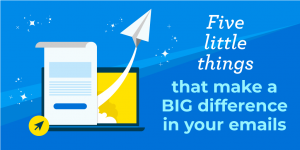In order to produce a successful 1:1 printing campaign, all you have to have is a great database, right? Not quite. Producing a successful 1:1 print campaign starts with having a great database, but even once you have the data, you have to figure out what to do with it. Often, that means data mining.
Data mining. The very phrase strikes fear into the hearts of marketers. The ability to connect the dots to reveal buying habits and other customer behaviors is something many people see as complex, expensive and within the purvey of only the largest companies. In reality, data mining is well within the grasp of any sized marketer.
The first step is simply to understand the field headings in your database. What data are you capturing? Most databases have basic information, like name, address and purchase history. Are you also capturing information such as age, gender and home ownership? If so, this tells you the types of queries you can run.
Running queries sounds complicated, but it simply means asking questions of the data. If you are a retailer, you might ask, “Which customers purchased hardwood flooring last month?” If you know that these customers are also likely to purchase area rugs and floor conditioning products, this gives you a great start.
Look at Everything
The great thing about data mining is that sorting is free. Run every sort you can think of. Is there a relationship between hardwood flooring and gender? How about income? Look at everything. You might find that data you once thought irrelevant, such as the date of purchase, has more relevance than you think.
Make the Most of What You Have
Every business has a database program so make the most of yours. Even basic software, like Microsoft Excel or Microsoft Access provides some data mining capabilities. Or you might want to purchase add-on data mining modules or third-party software. If you have customer information in multiple databases, you might also want to combine them into a single, comprehensive database for use in marketing. Even if you don’t, you can often extract useful information from even one or two databases.
Don’t overlook outsourcing. There are plenty of companies that specialize in this process. Many will use the moniker “business intelligence” or ETL (extract, transform, load) companies. Costs can be very reasonable, as little as $100 or more per sort.
So get curious. Take a few hours to run a variety of sorts just to see what you can find. That curiosity could make a big difference to the bottom line.
More Insights to Enjoy:
+ Psychographics Can Help Your Marketing Communications and Improve Direct Mail
+ Use Your Data to Describe and Predict
© Action Graphics, 2011. Article taken from Action Insights, Vol. 2, Issue 1. Sign up today to receive future issues of our newsletters.






